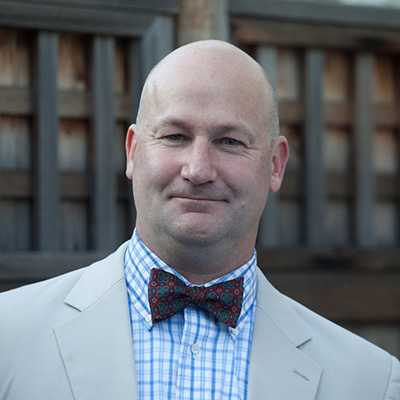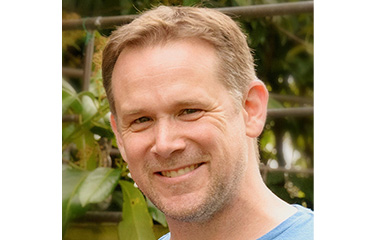Future of Fish, an international nonprofit working closely with seafood supply chains, aims to identify and remove barriers toward achieving a more sustainable seafood industry. The organization has adapted a global approach and applied consistent principles to engage with individual fisheries.
In an interview with SeafoodSource, Future of Fish Executive Director Peter Battisti discussed how his company effectively engages with nonindustrial fisheries and promotes responsible management to ensure long-term supply. Battisti has over a decade of experience in developmental work, with a focus on project finance and investment in the U.S., Caribbean, Latin America, and Southeast Asia in industries related to blue and green economies.
SeafoodSource: What does a systems approach look like at the community or individual fishery level?
Battisti: System analysis work seeks to collect, input, and synthesize information from as many stakeholders in a fishery as possible to understand the culture, politics, and governance that shape it – in addition to the business dynamics of the entire seafood supply chain. During this process, we’re asking ourselves, what makes these complex human-biological systems operate the way they do? What are the power structures? What basic conditions are absent that prevent fishers or cooperatives from contributing to or engaging in improvements? What resources would fisheries need to adopt to better their business practices?
Answering these questions helps us understand the fundamental barriers that fisheries face and what incentives or enabling conditions can be created to affect behavioral change. As we build our knowledge to understand these complex systems, which is a continuous process of engagement and learning, we morph into design mode in partnership with the fisheries.
You could think of Future of Fish’s approach akin to an innovation hub working in partnership with fishers, associations, and communities. The process of innovation is done in partnership with the stakeholders within the fishery through the principles of codesign and prioritizes solutions that unlock services and assets that deliver direct benefits to producers and associations.
SeafoodSource: Why is codesigning important when working with small-scale and artisanal fishing communities?
Battisti: With current models that seek to transform supply chains within small-scale or artisanal fisheries, communities and fishers often have limited agency to drive change and, most often, they are not at the table during the design process – nevermind as a key party through the improvement process. Codesigning with producers and harvesters allows us to understand what resources they need in order to adopt better business practices that improve their livelihoods and lead to improved sustainability.
By tailoring codesigns to meet their needs, we are empowering them to act in their own interest and the interest of the community. Our role is really to think about how we facilitate and activate these interventions, but the ownership or motivation for moving the interventions forward requires commitment from beneficiaries. So, we’re always listening.
We see supply chain interventions really struggle when trying to address questions like, how do you create real incentives and buy-in when the focus is on environmental improvements that aren’t necessarily about building value for fishers? More fundamentally, how do you meet fishers where they are to overcome fundamental barriers of resilience that so many face in small-scale fisheries, living day to day without safety nets to fall back on. Lastly, the process of codesign is continuous – there are no silver bullets. As we execute projects, we build on those [questions] in an iterative process with the idea of creating a snowball effect.
SeafoodSource: So, you identify what the market can change and then complement that by designing a strategy to support a fishing community’s ability to deliver long-term supply to the marketplace?
Battisti: Our approach, first and foremost, is built upon designing interventions with fishers and communities to support better livelihoods and improve sustainability within a fishery. The model doesn’t have to be applied through a market-based approach per se. That said, linking the work to models such as FIPs [fishery improvement projects] helps to provide a framework that connects to broader industry efforts. A challenge to getting fishers to engage with these approaches is that they are mostly – to adapt a metaphor – the stick without much carrot.
The message fishers hear is “stop the bycatch, use this technology, put cameras on your boats.” These are essential interventions to achieve sustainability, but from a fisher’s perspective, they can be patronizing and reinforce existing power dynamics in their day-to-day business. By combining a fisher-centric approach and working with FIP stakeholders, there is a pathway to coordinating efforts to benefit and incentivize all stakeholders to achieve their goals.
SeafoodSource: Most social and environmental efforts start out with a firefighting strategy – individual interventions to address specific pain-points – but then evolve to more reform-focused efforts. FIPs and similar interventions often operate in regions that lack capacity and resources for effective management. Is thinking about broader reform of the supporting governments an option, or will we likely need to rely on fishery-by-fishery interventions?
Battisti: Honestly, in the types of commercial fisheries we work with in the Global South, I don’t believe most governments have the capacity or the budgets necessary to fill the role that FIPs require of them in order to succeed. I think comanagement strategies provide an alternative or complementary model but have been limited in their application, as applying the model community by community requires significant trust-building and resources to replicate and scale. Regardless of the management structure, I think we need to find solutions that can support governments to engage more effectively in market-based interventions.
One basic need is a lack of adequate, reliable data and the ability to process and make decisions with that data. In regards to generating data, we are exploring the potential for digital services to bring significant benefits to fishers.
While traceability is one of the functionalities of these digital service offerings, the types of services and functionality that provide incentives for adoption by fishers are access to finance, markets, or other business services. So, if we want to move toward “traceable” small-scale fishery supply chains, we need to consider a broader range of digital service functionality that can appeal to fishers and associations – not just governments and big business.
Photo courtesy of Peter Battisti







